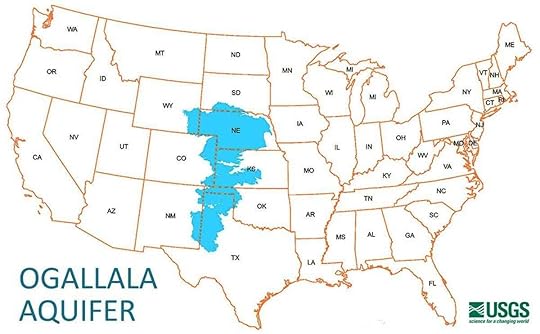What do you think?
Rate this book


352 pages, Kindle Edition
First published December 14, 2005
How to explain a place where hollow-bellied horses chewed on fence posts , where static electricity made it painful to shake another man’s hand, where the only thing growing that a man or cow could eat was an unwelcome foreigner, the Russian thistle? How to explain fifty thousand or more houses abandoned throughout the Great Plains, never to hear a child’s laugh or a woman’s song inside their walls? How to explain nine million acres of farmland without a master? America was passing this land by. It’s day was done.The Dust Bowl of the 1930s is far from public consciousness today, and that is a shame. There are lessons to be gleaned from that experience that apply directly to challenges of the 21st century. If we are not to be doomed to repeat the mistakes that were made before, it is critical that we know what happened then, how it came to be, and what might be done to prevent it, or things like it, from happening again.

I want to see if history got it wrong. With the Dust Bowl, it wasn’t that history got it wrong, it’s just that they got a different take. Here’s the largest Diaspora in American history and our view of it is entirely from Steinbeck’s novel, The Grapes of Wrath, where everyone left and went to California. Well, two thirds of the people didn’t leave.His methodology is not to lay out a raft of facts and statistics, but to follow several families through the ordeal of the Dust Bowl years. He focuses on the area where Kansas, Colorado, New Mexico, Oklahoma and Texas meet. He does get in the numbers but the human experience is how he makes the era emotionally accessible. Egan has a gift. He is a wonderful story teller, with a feel for portraying people. Egan’s time as a young man writing a novel (unpublished) helped him find his voice and it is in full throat here. I was reminded of excellent war books that paint a picture from the point of view of soldiers on the ground. Sebastian Junger’s War and The Good Soldiers by David Finkel are recent examples that pop to mind. Egan’s people cover a wide range, cowboys, farmers, schoolteachers, immigrants. The primary actors are supported by a cast that includes racists, unscrupulous politicians, town boosters, journalists, a forward-looking conservationist and the odd president or two. But he incorporates more than just a few points of human reference, bringing to his tale a sense of narrative arc, a perspective he brings to all his writing. In the Writers Workship interview he says, “I don’t want a phone book of episodic oral history. I’m looking for beginning, middle and end. I want things to happen. I want the reader to see change. All the things you want in fiction.”


Fields were bare, scraped to hardpan in places, heaving in others. The skies carried soil from state to state. With no appreciable rain for two years, even deep wells were gasping to draw from the natural underground reservoir. One late winter day in 1933, a battalion of clouds massed over No Man’s land. At midday, the sun disappeared. Lights were turned on in town in order to see. The clouds dumped layers of dust, one wave after the other, an aerial assault that covered streets in Boise City, buried brown pockets of grass, and rolled over big Will Crawford’s dugout… Hazel Lucas Shaw watched the dust seep through the thinnest cracks in the walls of their rental house, spread over the china, into the bedroom, onto the sheets. When she woke in the morning, the only clean part of her pillow was the outline of her head…
”BIG RABBIT DRIVE SUNDAY —BRING CLUBS”

Nobody knew what to call it. It was not a raincloud. Nor was it a cloud holding ice pellets. It was not a twister. It was thick like coarse animal hair; it was alive. People close to it described a feeling of being in a blizzard—a black blizzard, they called it—with an edge like steel wool.

In 1910, the price of wheat stood at eighty cents a bushel, good enough for anyone who had outwitted a few dry years to make enough money to get through another year and even put something away. Five years later, with world grain supplies pinched by the Great War, the price had more than doubled. Farmers increased production by 50 percent. When the Turkish navy blocked the Dardanelles, they did a favor for dryland wheat farmers that no one could have imagined. Europe relied on Russia for export grain. With Russian shipments blocked, the United States stepped in, and issued a proclamation to the plains: plant more wheat to win the war. And for the first time, the government guaranteed the price, at two dollars a bushel, though the war, backed by the wartime food administrator, a multimillionaire public servant named Herbert Hoover. Wheat was no longer a staple of a small family farmer but a commodity with a price guarantee and a global market.
”The uncertainties of 1919 were over,” wrote F. Scott Fitzgerald, the most insightful chronicler of the hubris of the 1920s. “America was going on the greatest, gaudiest spree in history.”
”Three little words achingly familiar on the Western farmer's tongue, rule life in the dust bowl of the continent – if it rains."
—Robert Geiger, a reporter for the Associated Press, 1935




